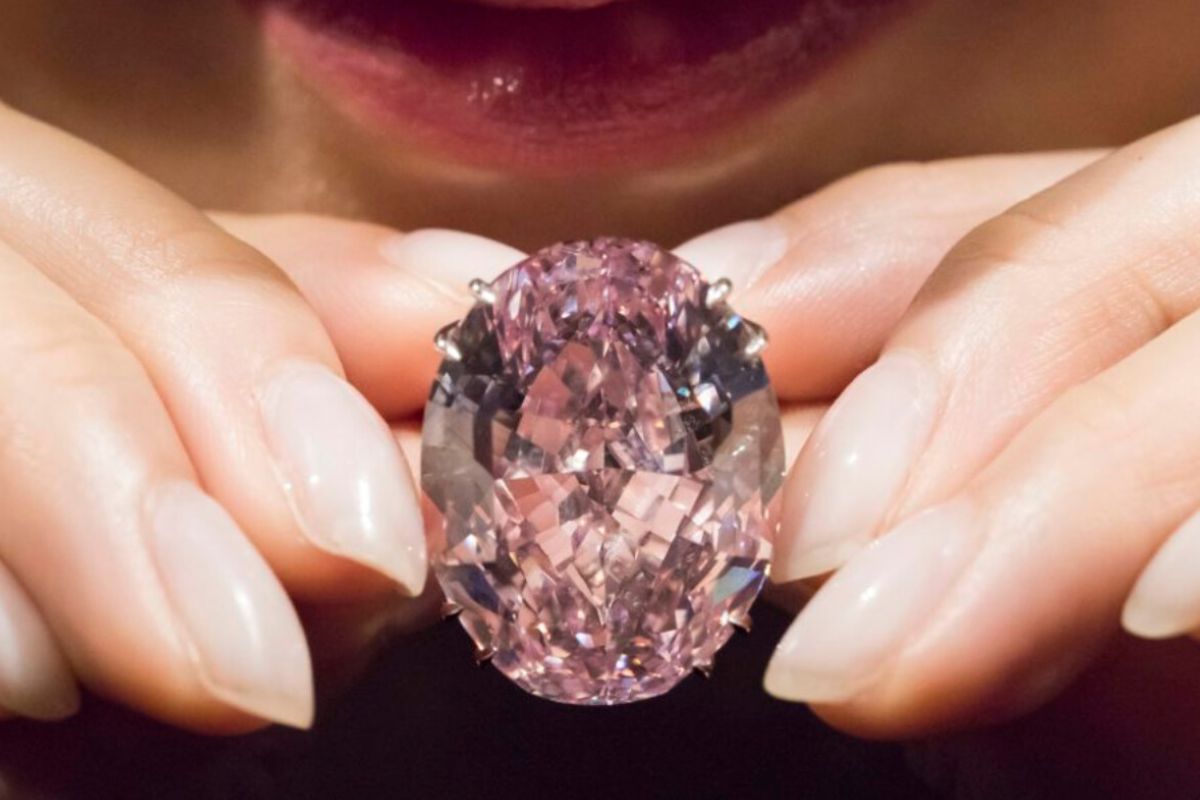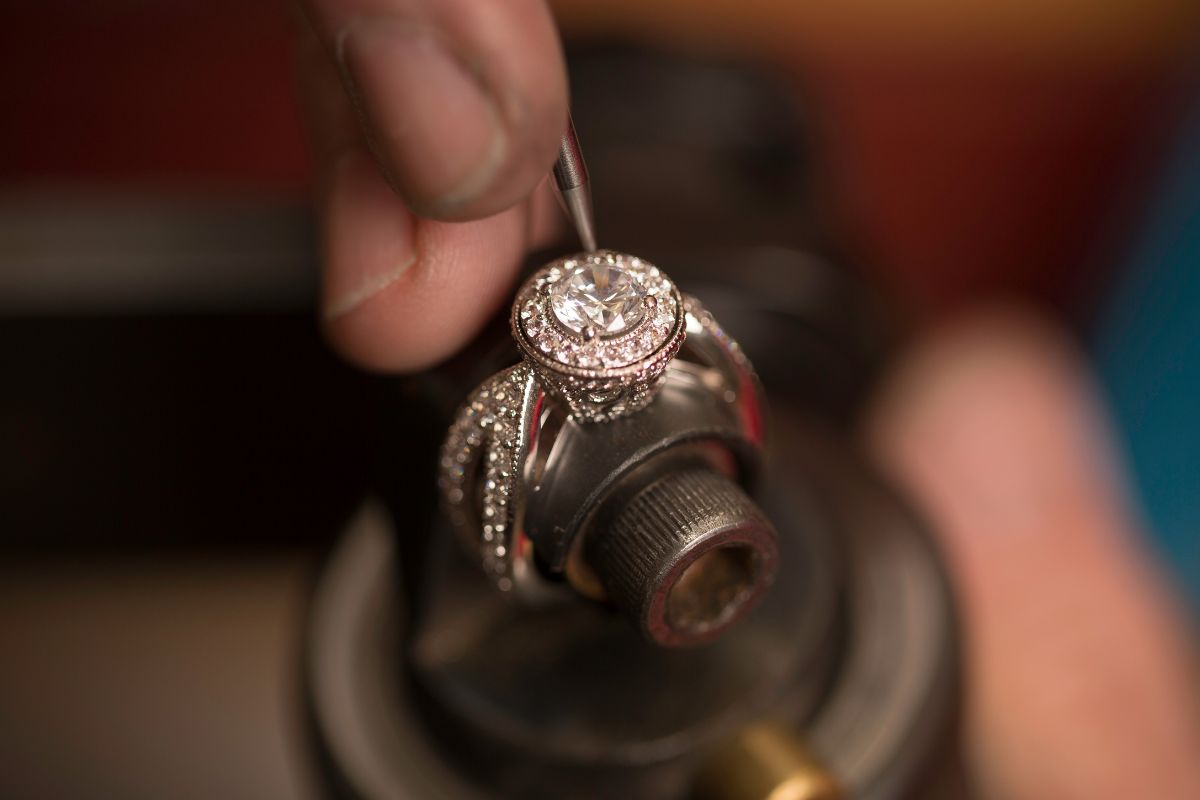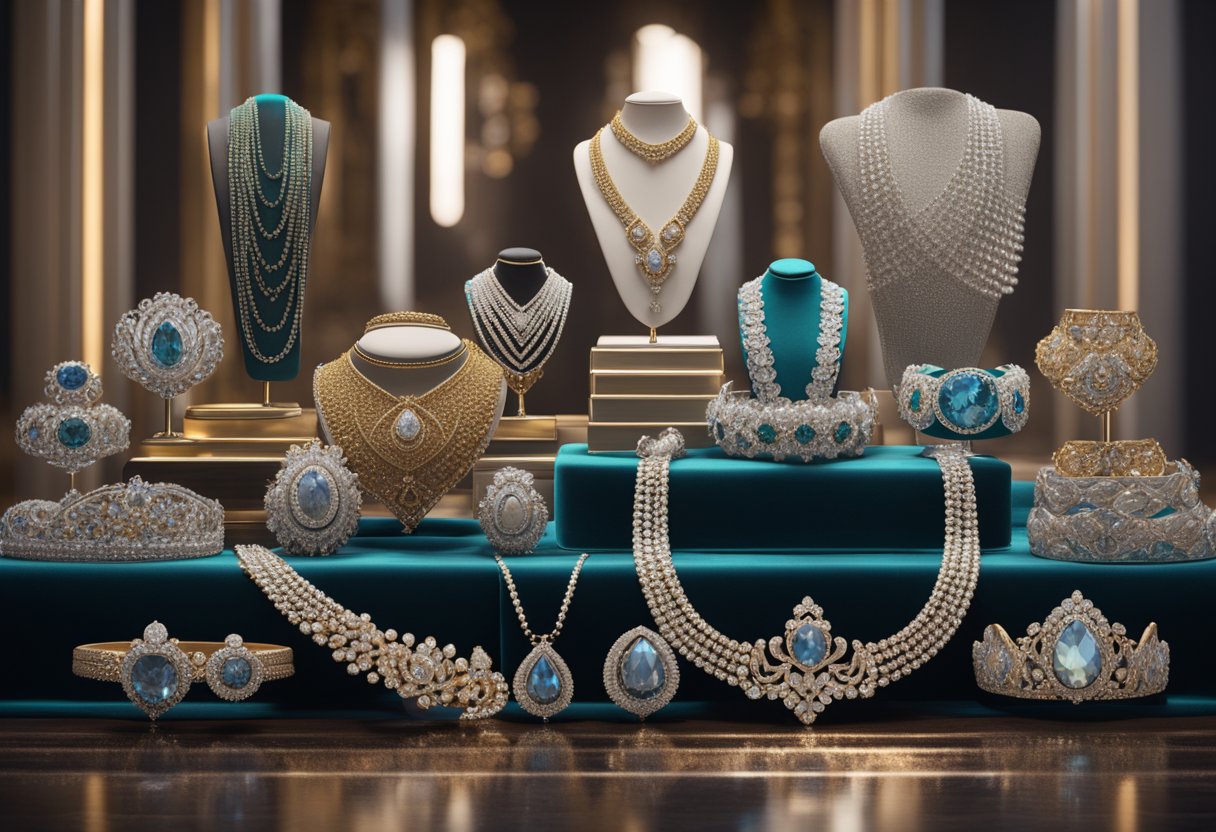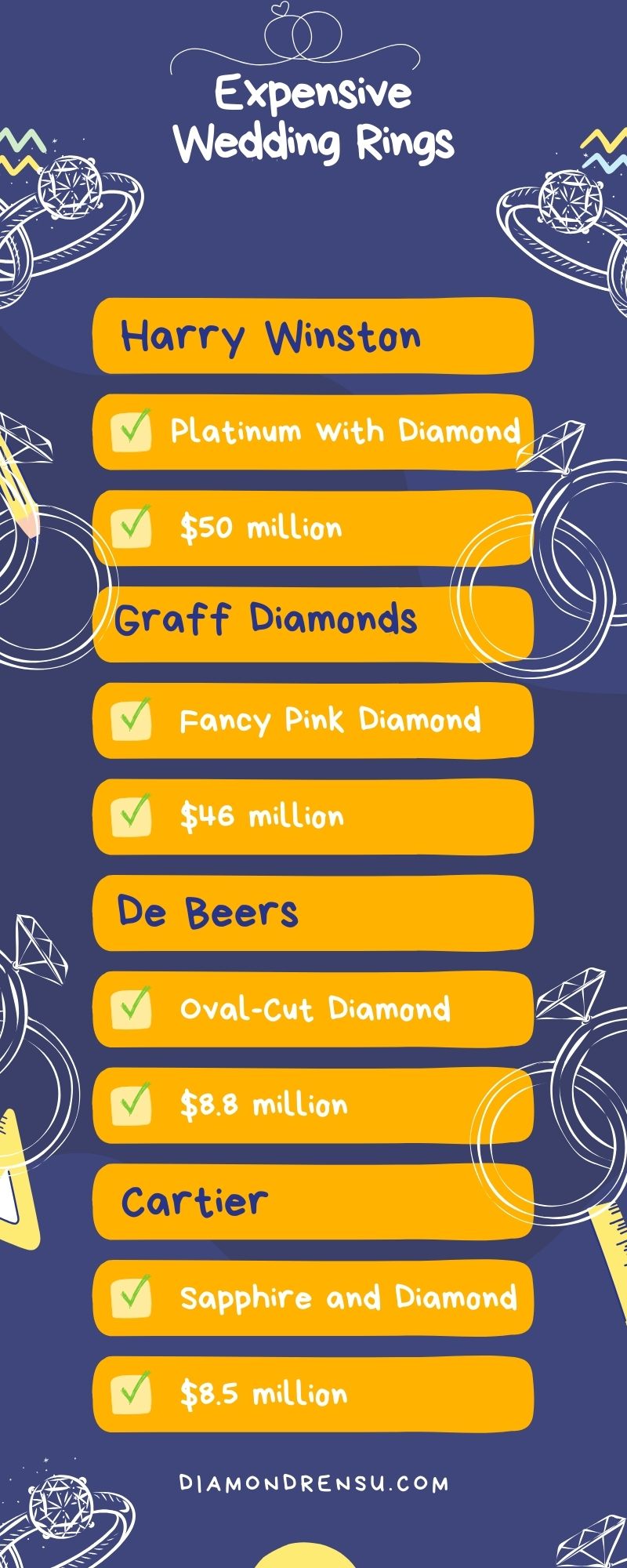
Most Expensive Jewelry: Unveiling the World's Priciest Pieces
Expensive jewelry often transcends its role as mere adornment, representing a confluence of craftsmanship, art, and investment. As someone with an interest in the nuances of the jewelry market, I've observed that high-value pieces frequently carry a history and rarity that contribute to their exorbitant prices. The most expensive jewelry in the world includes one-of-a-kind gems, intricate designs by renowned jewelers, and materials that are as remarkable as they are costly. These pieces are not just accessories but are also considered to be wearable expressions of wealth and status.
The allure of expensive jewelry comes from its capacity to embody both beauty and value. Diamonds, emeralds, sapphires, and rubies often take center stage in these lavish creations, securing their status through carat weight, color, clarity, and cut. But it's not just the gems that make this jewelry so valuable; the precious metals that hold them—gold, platinum, and sometimes even titanium—contribute both to their allure and their market value. Every aspect from the gemstone's provenance to the designer's signature can affect the final price tag, making each piece an exclusive article of luxury.
Historical Significance and Rarity
Jewelry has always been more than a mere adornment; it carries with it tales of human history, symbolizes the wealth of nations, and reflects the artistry of ancient and modern craftsmanship. Certain pieces and gems are renowned not only for their beauty but also for their storied pasts and the scarcity that catapults their value to staggering heights.
Origins of High-Value Jewelry
India has long been recognized as a historical bedrock for high-value jewelry, particularly in the mining and crafting of diamonds and other precious stones. The Golconda region was famed for its diamonds, and these stones often passed through the hands of royalty and into the annals of history. Emeralds and rubies also found their origins in ancient cultures, revered not only for their beauty but also for their rarity and the power they were believed to hold.
Famous Diamonds with Historical Relevance
The Hope Diamond, a deep blue gem with a rich backstory, is a prime example of historical significance. Once owned by kings and stolen during the French Revolution, it now resides in the Smithsonian Museum in Washington, D.C. Another notable mention, mined in South Africa, is the "Cullinan," the largest rough diamond ever found, parts of which are set in the British Crown Jewels.
Significance of Colored Diamonds and Gemstones
Colored diamonds, such as pink, red, blue, and orange, are particularly noteworthy for their rarity and value. The Pink Star diamond, which was sold for a record-breaking sum, and the Graff Pink are exemplary pink diamonds that have garnered worldwide attention. Similarly, blue diamonds like the Hope diamond carry a historical allure, often fetching high prices in places like New York City due to their exceptional rarity and the richness of their hue.
Iconic Jewelry Pieces

Iconic jewelry pieces have adorned royalty, celebrities, and the ultra-wealthy, encompassing legendary diamonds and gemstones with histories as rich and colorful as the stones themselves.
The Most Renowned Diamonds
The Pink Star: One of my personal favorites is the Pink Star Diamond, a stunningly rare 59.60-carat gem that fetched $71.2 million at Sotheby's Hong Kong in 2017, making it the most expensive piece of jewelry ever sold at auction. A testament to its rarity, the Pink Star is a cut above in both size and color.
Oppenheimer Blue: Another fascinating gemstone is the Oppenheimer Blue Diamond. With its vivid blue hue, this 14.62-carat diamond was named after its previous owner, the famous diamond dealer Sir Philip Oppenheimer. In 2016, the Oppenheimer Blue Diamond was auctioned for an impressive $50.6 million.
Winston Pink Legacy: This historic 18.96 carat, fancy vivid pink diamond was previously owned by the Oppenheimer family and sold for over $50 million. Renowned jeweler Harry Winston purchased the stone, adding it to their collection of exquisite gems.
Legendary Gemstones and Their Stories
Blue Moon of Josephine: A captivating tale involves the Blue Moon of Josephine, a 12.03-carat flawless blue diamond bought for a record-setting $48.5 million. The buyer named it in honor of his daughter, Josephine, emphasizing not just the value, but the personal significance that such pieces can hold.
Sunrise Ruby: In the realm of colored gemstones, the Sunrise Ruby stands out. This rare 25.59-carat Burmese ruby set a record as the most expensive ruby ever sold at auction, which was $30.42 million in 2015. Its extraordinary color and purity elevate it to legendary status.
The Orange: Another entrancing specimen is The Orange, a 14.82-carat Fancy Vivid orange diamond, which went for $35.5 million at auction. It is the largest Fancy Vivid orange diamond ever offered at auction and commands attention for its size and the rarity of its color.
Jewelers like Cartier, Tiffany & Co., and Mouawad have had the honor of crafting various settings for such mesmerizing gemstones, thereby enhancing their allure and cementing their iconic statuses. Each piece tells a story, not just of luxury and aesthetics, but also of history, tradition, and human emotion.
Classification and Valuation

When classifying and valuing jewelry, the focus is on the materials and craftsmanship. Jewelry can comprise diamonds, gold, and other precious materials, and its value is influenced by factors such as rarity and demand.
Grading and Certification by Gemological Entities
I understand that the process of grading and certification is vital when assessing the quality of gemstones, especially diamonds. A notable entity in this domain is the Gemological Institute of America (GIA), renowned for its rigorous standards. They classify diamonds through a comprehensive grading system that examines four main criteria: cut, clarity, color, and carat weight, often referred to as the "Four Cs." For example, a diamond certified as "Internally Flawless" reflects exceptional purity, whereas labels such as "Fancy Vivid Blue" or "Fancy Vivid Pink" are indicative of the diamond's unique and rich coloration. A "Flawless Diamond" boasts perfection with no internal or external flaws, significantly enhancing its value. Furthermore, Type IIa diamonds are almost or entirely devoid of impurities, making them incredibly rare and valuable.
Determinants of Jewelry Value
The value of jewelry is determined by a complex interplay of factors. Rings and necklaces, such as a diamond pendant, can carry hefty price tags depending on their exclusivity. Here are some determinants:
- Material: The type and quality of the material, including the presence of high-quality diamonds or gold.
- Craftsmanship: The level of craftsmanship and the complexity of the design.
- Provenance: The history and origin of the piece can contribute to its story and desirability.
- Market Demand: The current demand in the market for specific styles or collections.
- Rarity: Unique characteristics or scarcity, as seen in certain types of diamonds like Type IIa, which are highly sought after.
Valuable necklaces or rings, often central pieces in a collection, are not only fashion items but investments assessed for their potential to appreciate in value over time. The aim is to identify jewelry that not only captivates the eye but also holds its value due to its inherent qualities.
Innovations in Craftsmanship

In my exploration of the most expensive jewelry, I've noted significant advancements that contribute to their value and uniqueness. These innovations in craftsmanship are vital to understanding the importance and rarity of such extraordinary pieces.
Advancements in Cutting and Shaping Diamonds
When discussing luxury in jewelry, the precise cutting and shaping of diamonds stand paramount. In my experience, industry experts continually push the boundaries of diamond crafting techniques. One such advancement is the development of the Graff Diamond, which embodies precise cuts to bring out the exceptional brilliance of diamonds. Techniques used for shaping these gems into perfect forms, like the popular oval diamond, have become more sophisticated. Utilising state-of-the-art technology, combined with the age-old knowledge of diamond cutting, skilled artisans in workshops are able to enhance the stone's optical performance to levels previously unattainable.
The Confluence of Art and Jewelry Making
Modern jewelry transcends traditional adornments, becoming a fusion of art and skilled craftsmanship. I've seen platinum and rose gold, materials once just the medium, become integral parts of jewelry design, intrinsically tied to the piece's aesthetic and structural integrity. Artisans are integrating materials such as aquamarine stone not only for their intrinsic value but for their contribution to the piece’s artistic narrative. This blend of artistic expression with traditional jewelry making elevates the entire concept of what jewelry can be, marking a new era where each piece serves as a testament to human creativity and engineering marvel.
The Jewelry Market Today
As a seasoned expert in the jewelry market, I've observed that today's market is characterized by a robust demand for exceptional pieces, with an emphasis on quality and history. Buyers consider jewels both as adornments and as investment pieces, with a keen eye on their potential to appreciate in value.
Most Sought-After Pieces for Sale
When considering the most sought-after pieces for sale, I find that there's a substantial demand for expensive engagement rings. These rings, often featuring exquisite diamonds and precious metals, not only represent a symbol of love but also a stable investment. Notable collections, such as those put together by billionaire businessmen or esteemed institutions like Princeton University, often contain such prized engagement rings and drive significant interest when they hit the market.
Jewels as Investment Vehicles
Jewels as investment vehicles have gained traction among the affluent, particularly in times of economic uncertainty. I've ascertained that high-quality gems and jewelry pieces from reputable brands consistently hold or increase in value. Their rarity and desirability make them a solid choice for people looking to diversify their investment portfolios.
The Role of Auction Houses in Jewelry Transactions
Finally, the role of auction houses such as Christie’s in Geneva cannot be overstated. These institutions are critical in facilitating the sales of high-value jewels, often brokering deals for unique and rare pieces that attract global attention. The auction setting allows for potential bargains, offering buyers a chance to acquire gems at prices that may be advantageous compared to the listed retail value. It's a thrilling aspect of the industry where the value of a piece can skyrocket based on the story it tells and the desire it sparks among bidders.
Prominent Jewelry Brands and Designers

In the realm of luxury, certain brands and designers stand out for their unparalleled craftsmanship and history of adorning the world's elite. These marquee names have defined style and opulence across generations.
Legacy and Influence of High-End Brands
Harry Winston, often known as the "King of Diamonds," has a storied legacy with pieces like the Hope Diamond and the Winston Legacy diamond, symbolizing their pinnacle in gemstone excellence. Cartier, founded in 1847 in Paris, has grown synonymous with timeless elegance, its creations gracing royal families and celebrities alike. Cartier’s pieces, such as the necklace worn by Beyoncé, have consistently captured public fascination.
Another notable entity in this sector is Mouawad, a brand that has actively set world records with astounding pieces like the "L'Incomparable" diamond necklace and the "1001 Nights Diamond Purse." These brands are more than just manufacturers of fine jewelry; they are the architects of a legacy that transcends time, often showcased in prestigious events, including the World's Fair where exceptional pieces like the Tiffany Diamond have been displayed, reinforcing their influence on the craft and design of high jewelry.
Exclusive Collections and Custom Creations
My thoughts on exclusive collections and custom creations are centered around the rich tradition and personalized experience that these luxury brands exemplify. Harry Winston’s World’s Fair Necklace, with its splendid array of sapphires and diamonds, is a perfect example of a one-of-a-kind piece that captures both innovation and the brand's essence. On the other hand, the sale of the Sweet Josephine pink diamond by Christie’s illustrates the exclusivity and high demand for prestigious items with a backstory.
High jewelry brands also cater to the preferences of sophisticated clientele with their custom creations. A client can commission a piece featuring exquisite jadeite, valued for its deep cultural significance and vivid green hue, to possess something uniquely theirs. Furthermore, the Empire Diamond, a recent addition to the Harry Winston inventory, showcases the brand's continuous pursuit of grandeur, with their commitment to precision and refinement.
Incorporating a client's vision, these houses of luxury meld exceptional gems and unparalleled artisanship to create masterpieces that are not just worn, but are also a defining aspect of their personal legacy.
Cultural and Societal Impact

Jewelry, particularly pieces such as rings, often denotes more than just aesthetic appeal; it frequently represents wealth and social status.
Jewelry as a Status Symbol
Jewelry, especially when it's luxurious and attention-grabbing, has been a status symbol across various cultures for centuries. The tendency of individuals to wear jewelry that reflects their wealth is well-documented. Rings, for example, are not just fashion accessories but are often laden with deeper societal meaning, such as power and marital status. Splendor in jewelry can signify an individual's affluent status; a billionaire businessman wearing a highly-priced watch can project an image of success and influence.
Luxurious jewelry pieces, such as the Tiffany Diamond, have become synonymous with opulence and have been worn by icons like Beyoncé, further solidifying jewelry's role as a marker of high social standing. When celebrities or public figures are seen with extravagant jewelry, it reinforces the link between jewelry and social hierarchy.
Representation of Jewelry in Popular Culture
Jewelry's representation in popular culture plays a significant role in shaping public perception. Representation ranges from music videos and films, where artists and actors don luxury pieces to exude a certain image, to literature, where descriptive passages of magnificent jewels contribute to a character's narrative arc. Jewelry used in popular culture often reflects and perpetuates what society views as desirable and valuable. For example, scenes showcasing characters at opulent galas wearing stunning jewelry pieces underline the connection between social prestige and ornate accessories.
The repeated portrayal of jewelry as an emblem of luxury and success influences societal standards of what is considered the epitome of achievement and taste. As I explore the cultural and societal impacts of jewelry, it's clear that its significance extends far beyond mere decoration; it is a powerful social tool used to delineate status, project success, and embody cultural values.
Geographic Sources of Precious Elements

Precious elements like diamonds and emeralds captivate with their beauty and rarity. I find that the geographic locales these elements are sourced from are as fascinating as the gems themselves.
Discovering Riches: Locations of Major Mines
Diamonds: The quest for diamonds has taken me from the deep mines of Botswana to the vast expanses of South Africa. Botswana's Jwaneng mine, one of the wealthiest diamond mines globally, lends a significant part to the country's economy. Meanwhile, South Africa's Kimberley region was where the diamond rush began in the 1870s, giving rise to monumental mines like the Cullinan.
Emeralds: I have learned that Colombia, with its verdant landscapes, is often synonymous with emeralds. However, the source of this rich green gemstone also spans to African continents, with mines in Zambia and Zimbabwe. These locations are renowned for their deep green stones, a symbol of vitality and wealth.
Boron: While less known, boron is crucial in making heat-resistant glass and fiberglass. My research indicates Turkey as the leading provider of this element. The country's vast borate deposits play a pivotal role in the comprehensive supply of boron worldwide.
I've observed that Israel, while not as extensive in its natural reserves as Africa, has carved a niche in the diamond industry through its advanced diamond cutting and trading sectors. The country is known for transforming rough diamonds into priceless gems sought after across the globe.
In summary, the landscapes from which these precious elements are sourced are as diverse and colorful as the gems themselves. From the motherland of Africa, with its richness in diamonds and emeralds, to the technical prowess of Israel in diamond cutting, each plays a critical role in delivering luxury to the fine jewelry market.
Also Read
Frequently Asked Questions
In this section, I'll answer some of the most common queries regarding the opulent world of jewelry. From iconic brands to record-breaking gemstones, you'll find concise insights into the luxury jewelry market.
What are the world's top luxury jewelry brands?
Luxury jewelry brands are defined by their craftsmanship, history, and exclusivity. Brands like Cartier, Tiffany & Co, and Van Cleef & Arpels stand at the pinnacle of the industry, renowned for their timeless designs and use of premium materials.
Which celebrities have worn the most costly jewelry?
Celebrities often don fortes with dazzling pieces on the red carpet. Elizabeth Taylor was known for her impressive collection, including the Taylor-Burton Diamond. Recently, Lady Gaga wore one of the world's most expensive necklaces, featuring a yellow diamond worth millions, to the Oscars.
What are the most expensive types of jewelry rings available for purchase?
Rings with rare diamonds or gemstones command the highest prices. For instance, pink diamonds are exceedingly rare and can fetch exorbitant prices. Another example is the Blue Moon diamond ring, which sold for over $48 million.
Which are some of the most high-priced jewelry stores?
Stores like Harry Winston, Graff, and Buccellati are synonymous with high-valued jewelry, offering bespoke services and pieces that are akin to wearable art.
What is the most expensive gemstone that has been sold at auction?
The Pink Star Diamond holds the title for the most expensive gemstone sold at auction. This flawless 59.60-carat pink diamond was sold for $71.2 million.
Who is known to have the largest collection of valuable jewelry?
Royal figures often have vast collections of valuable jewelry, with the British royal family's collection being one of the most significant. Queen Elizabeth II has an extensive collection, including the Cullinan Diamond, which is the largest rough diamond ever found.
Checkout some of our top collections:
Comments
Leave a comment
Please note, comments must be approved before they are published.











Sonya Hadi
September 19, 2024